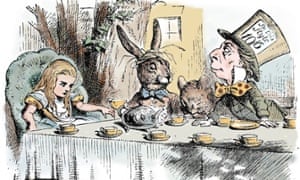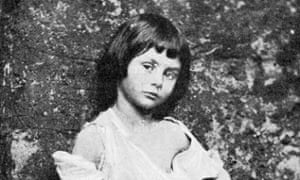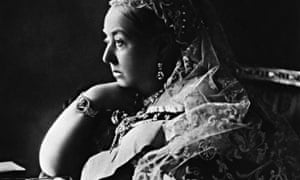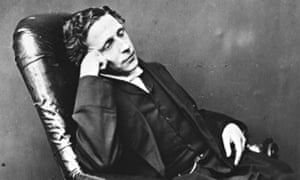Oliver Lansley, creative director and co-writer of two stage adaptations of Lewis Carroll’s novel, Adventures in Wonderland and Alice’s Adventures Underground, reveals some curiouser and curiouser facts about Alice and Carroll that you might not know (but no – not the reason why a raven is like a writing desk…)


2. The tree that is said to have inspired the Cheshire Cat’s tree stands in the garden behind Alice’s home at Christ Church College, Oxford.
3. Mock Turtle soup IS REAL! It was a popular dish in Victorian times, created as a cheaper version of green turtle soup.It was made from various odd parts of a calf, such as brains, head and hoof!
4. After reading Alice’s Adventures in Wonderland, Queen Victoria, having loved the book, suggested that Carroll dedicate his next book to her! And so, his next work, An Elementary Treatise on Determinants, With Their Application to Simultaneous Linear Equations and Algebraic Equations, was presented to the Queen – perhaps not quite what she’d had in mind…

5. The names of the three little sisters in the Dormouses’ story (Elsie, Lacie and Tillie) also refer to the names of the three Liddell sisters. Elsie originated from the initials of Lorina Charlotte, Lacie is a transformation of Alice, and Tillie was short for Matilda, a name given to Edith by her sisters.
6. Lewis Carroll suffered from a rare neurological disorder that causes strange hallucinations and affects the size of visual objects, which can make the sufferer feel bigger or smaller than they are – a huge theme of the book. The disease, first discovered by English psychiatrist John Todd in 1955, was later named Alice in Wonderland Syndrome. It is also known as Todd’s syndrome.
7. Lewis Carroll’s real name was Charles Lutwidge Dodgson. His pseudonym is an Anglicization of Ludovicus, the Latin version of “Lutwidge”, and the Irish surnameCarroll, which bears great resemblance to the Latin forbear of “Charles”, Carolus.

8. The novels were banned in China in 1931, on the grounds that “animals should not use human language”.
9. In 1890 Lewis Carroll released a shortened version of Alice’s Adventures in Wonderland for smaller children aged “from nought to five”. It includes 20 of John Tenniel’s illustrations from the original book coloured, enlarged and, in some cases, revised.
10. Our productions – Alice’s Adventures Underground and Adventures in Wonderland – contain approximately:
33 individually designed sets
227 members of the cast, creative and production team
6,077 jam jars
66,508 jam tarts
92,400 playing cards
And countless man hours…
227 members of the cast, creative and production team
6,077 jam jars
66,508 jam tarts
92,400 playing cards
And countless man hours…
We even asked a statistician to work out how many times you could come and see the show and get a different performance and he was unable to work it out, there were so many variations – hopefully Mr Dodgson would be proud!